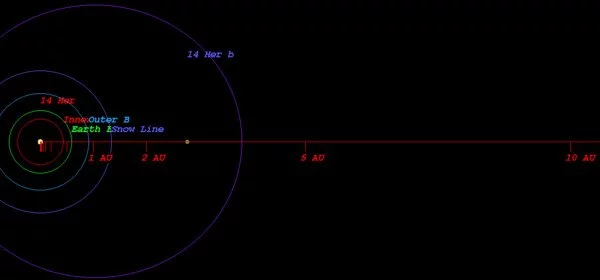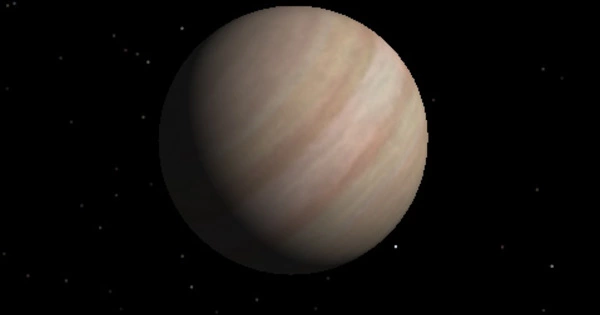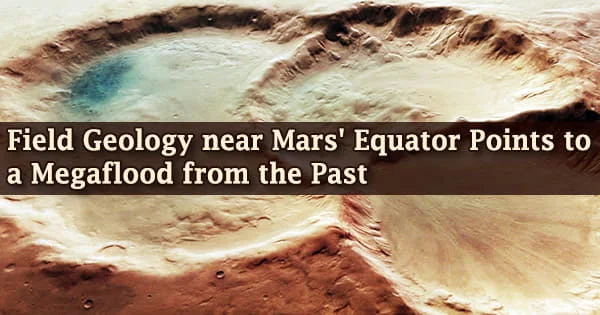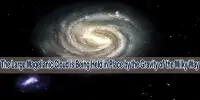14 Herculis b is a gas giant exoplanet in the habitable zone of a G-type star. It is an exoplanet located in the constellation Hercules, approximately 58.5 light-years away. It has a mass of 4.66 Jupiters, takes 4.9 years to complete one orbit around its star, and is 2.93 AU away from it. The planet was discovered orbiting the star 14 Herculis, and its mass suggests that it is a Jovian planet roughly the same size as Jupiter but much more massive.
The Geneva Extrasolar Planet Search team discovered it in July 1998. It was the extrasolar planet with the longest orbital period at the time of discovery, though longer-period planets have since been discovered. Its discovery was made public in 2002.
Discovery
14 Herculis b was discovered by measuring variations in its star’s radial velocity caused by the planet’s gravity. This was accomplished by taking precise measurements of the Doppler shift of the spectrum of 14 Herculis. Prior to this analysis, another possible explanation for previous Doppler shift analysis included face-on spectroscopic binaries.
14 Herculis is an orange-red main-sequence dwarf star with the spectral and luminosity type K0 V. The star could have 79 percent of Sol’s mass, 88 percent of its diameter, and 75 percent of its luminosity. Based on its abundance of iron, the star appears to be 3.2 times as enriched in elements heavier than hydrogen as Sol. It may be around six billion years old, roughly a billion and a half more than Sol.

Orbit and mass
4 Her b is an exoplanet that orbits the star 14 Her, which is located approximately 58.3 light-years (17.9 pc) from our Solar System. Its discovery was made public in 2002. 14 Her has an apparent magnitude of 6.7 and an absolute magnitude of 5.4. It is 0.9 times more massive and 0.7 times larger than our Sun. The surface temperature is 5311, with K0 V spectral types. The extrasolar planet 14 Her b orbits the star 14 Her every 1763.3 days at an orbital distance of 2.85 AU in this planetary system.
According to preliminary astrometric measurements made by the Hipparcos satellite, this planet has an orbital inclination of 155.3° with respect to the plane of the sky, implying a true mass of 11.1 times that of Jupiter, which is close to the deuterium burning threshold that some astronomers use to distinguish between a planet and a brown dwarf. However, subsequent analysis indicates that the Hipparcos measurements were insufficiently precise to accurately determine the orbits, so the planet’s true inclination and mass remain unknown. Its inclination is being calculated using Hubble and astrometry. The astrometricians anticipate publication by the middle of 2009. It could also be a target for astrometric missions like Gaia.
Direct imaging
Because of the large angular separation between this planet and its host star, as well as the close proximity of the 14 Herculis system to the Sun, it is a promising candidate for direct imaging of the planet, as the angular separation between the planet and host star will be large enough that the light from the planet and star may be spatially resolved. However, a search using the adaptive optics CFHT 3.60m telescope on Mauna Kea did not yield such a result, confirming that the object is not a star.
















